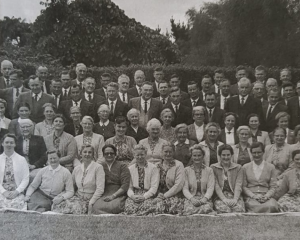New Zealand schools have less of a mix of rich and poor students than in the past, a new report shows.
Principals have reported the growing division, and say some parents are driving their children large distances to avoid local schools.
The international survey of primary school principals found that in New Zealand the separate concentration of disadvantaged and well-off students has become more marked.
The findings are contained in a Ministry of Education analysis of global education rankings known as the Progress in International Reading Literacy Study (PIRLS).
Principals in all countries were asked to estimate the proportions of students in their school that came from economically disadvantaged backgrounds, and the proportion from well-off homes.
From the first test in 2001 to the most recent in 2010/11, there was an increase in the proportion of Year 5 students attending schools with mainly more affluent students, from 20 to 30 per cent. This was largely due to a decrease in the proportion attending schools where the composition was judged to be more even.
The proportion of students at schools where more than 50 per cent of the roll were identified as disadvantaged increased over the same period from 18 to 22 per cent.
Principals Federation president Phil Harding said he was not surprised by the report. Initiatives such as National Standards contributed to a false impression that student achievement data was a fair measure of a school.
"In Christchurch, we see parents driving significant distances across the city to access the schools that they perceive to be better. [But] wealthy students achieve highly wherever they are.
"A school with more disadvantaged children may be doing a far better job of raising achievement than a high-decile school that is just ticking along. All we are doing is creating a market where people who can choose, do choose, and people who can't end up ghetto-ised."
But Education Minister Hekia Parata said National Standards would help address problems identified in the PIRLS analysis. "It allows us to look at how best we can support all children and target those who are falling behind much earlier to give them the help they need."
Ms Parata said socio-economic status or decile was "not destiny". There were many examples of schools and students from low-decile areas achieving strong results.
"Educationally, the evidence is that students can make good progress based on the quality of teaching they get, not on their socio-economic background."
While the report looked at primary schools, Dr Cathy Wylie of the NZ Council for Educational Research said a similar trend existed for secondary schools.
Her own survey of secondary schools, which included 1477 parents, found that 40 per cent of parents sent their children to a secondary school that was not their closest school - usually to a higher-decile school.
Nationally, Dr Wylie said students in decile 1 to 3 schools declined by 12 per cent from 2000 to 2011, while the numbers in decile 8 to 10 schools grew by 23 per cent.
Secondary schools, more than primary schools, were in competition with each other for students, and many low-decile schools were less able to attract their community's higher-performing students.
Increasing property prices were also partly responsible, Dr Wylie said.
Edgewater College principal Allan Vester, chair of the NZ Secondary Principals Council, said more parents now viewed "having the right connections" as vital, rather than simply hard work and ability.
"Education has traditionally been a way to change your life prospects and social position and that is something that should be treasured by our society."
- Nicholas Jones of the New Zealand Herald












